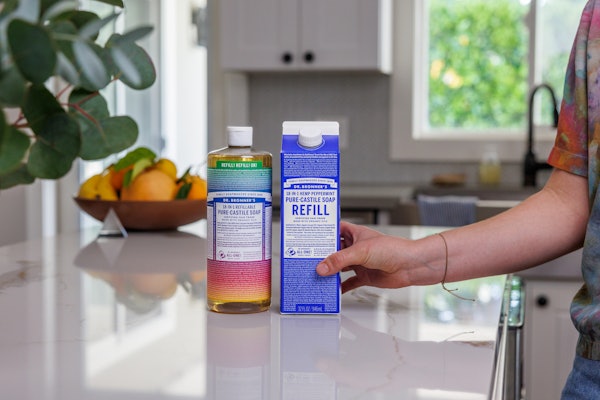Now is as good a time as any to assess the law’s burdens, since the registration requirements have begun to kick in, and failure to comply can mean legal troubles and, perhaps more immediately, a loss of business from EU customers who are going to need your help to comply with this complex law.
REACH stands for Registration, Evaluation and Authorization of Chemicals, and the law is intended to identify and gather safety information on chemicals that are used and marketed in the European Union. REACH applies to chemicals that are made or imported into the EU at 1 tonne [a metric ton] or more per year. There are a range of exemptions built into the law, but because the law’s burdens are so varied, many exemptions merely reduce, but don’t eliminate, all the burdens on a particular substance.
The EU has already published a list of chemicals in the past, called the European inventory of chemicals, or “EINECS,” but registration of all chemicals, including EINECS-listed substances, is required before marketing for makers or importers of those.
December 1, 2008, was the deadline for pre-registration for makers or importers of chemicals qualifying as so-called phase-in substances (essentially, EINECS-listed substances), and that pre-registration earned them a delay in compliance with the registration requirements. The delayed start dates range from 2010 through 2018, depending on the volume of the chemical and the type of chemical involved.
The biggest burdens fall on makers and importers to the EU of chemicals classified as of “very high concern,” including carcinogens, reproductive toxins, mutagens, and the like. The EU has published its initial list of 15 such chemicals, called the Candidate List of Substances of Very High Concern, at http://echa.europa.eu/chem_data/candidate_list_en.asp. (See packworld.com/article-23590 for more background.)
We turned for assistance to Sebastien Louvion, a Brussels-based lawyer who has been helping a number of companies comply with REACH.
It’s important first to remember that, “REACH only applies to EU companies, i.e., manufacturers and importers of substances, preparations, and articles established in the EU,” says Louvion. So if you don’t have an EU presence, REACH might affect you in that you are asked for information by your customers in the EU who do have such a presence. “Failing that,” he warns, “non-EU companies will simply lose their EU business to competitors that are able to provide assistance for REACH compliance.”
Packaging or packaging component manufacturers should ask their suppliers to identify any “candidate list substance” (one of those chemicals that appears on the Candidate List and is considered to be a Substance of Very High Concern) that is present at a level of 0.1% or more in the product they supply. Louvion further notes that “If your packaging materials incorporate substances that are intended to be released, you must require all the information from your supplier that will be necessary for the Registration of these substances,” so you can pass that along to whoever will be doing the Registration in the EU, which could be your customer if they are the importer, or the party you appoint as an Only Representative to take care of Registration.
In turn, makers of packaging or packaging components can expect to be asked by their downstream customers to provide the names of substances on the Candidate List that are present at above 0.1% in the packaging materials, and the names and amounts of substances intended to be released from the packaging materials, if applicable. “Companies exporting polymers that do not qualify as articles (e.g., polymers in powder, pellet, or liquid form) will have to share more extensive compositional requirement (names and use levels of monomers and additives) as the importer or Only Representative of the non-EU manufacturer will have to register the monomers (above 2%) and other chemical substances in the polymer (e.g., additives),” says Louvion.
What does REACH, a law of broad applicability, entail for packaging in particular? Louvion summarizes: “Packaging, whether imported into the EU by itself or together with the products it packages, is an article under REACH, subject to specific requirements separate from the packaged product. Non-EU Packaging manufacturers must therefore be familiar with requirements applicable to the import of substances in articles.”
“While there are a number of broad exemptions for chemical substances used in certain applications (e.g., medicinal products, food and feed), there are only two very limited exemptions for food packaging materials. [Take a deep breath and absorb these]:
(1) Under Article 14.5(a), Chemical Safety Reports (CSR), which are mandatory documents that must be generated internally and included in part in Safety Data Sheets for all substances subject to Registration and manufactured or imported in quantities of 10 tonnes or more per year, do not need to include consideration of risks to human health resulting from food contact applications covered under EU food contact legislation; and
(2) Under Article 56.5(b), the use of chemical substances in food contact applications is exempt from Authorisation (and these substances can therefore continue to be used in packaging even after they have been included in Annex XIV) if said substances were subjected to Authorisation only because of hazards to human health.”
Failure to comply with REACH can have real consequences. Products that are marketed in the EU but do not comply with REACH are illegal under EU law, subject to seizure. Also, each EU member nation can impose penalties for violations under its own laws.
Louvion’s view, though, is that the most pain of noncompliance will likely be commercial: “Non-compliance with REACH will mean loss of the EU market, as EU customers will turn to companies that can assist them in their efforts to comply with REACH.”
A useful reminder about compliance with any law: Failure to comply can mean troubles with enforcing governments, but also, and especially as with REACH which involves international movement of chemical substances, a loss of customers.
• Eric can be reached at [email protected], or visit his firm’s Web site at www.ericfgreenbergpc.com.























